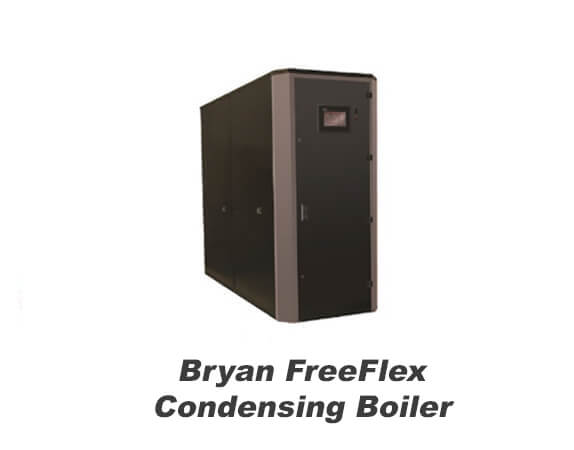Buildings all over California rely on boilers for hot water, central heating, cooking, and more. Using a highly efficient boiler versus an old, poorly maintained one can mean saving thousands of dollars over the years, and you’ll leave a smaller carbon footprint, too.
Achieving High Efficiency in Boilers
With old boilers, you’re lucky to hit 70 percent efficiency, while some are barely scraping by at 50 percent. That’s a lot of wasted energy–and wasted money. Mid-efficiency models can stretch above 80 percent. However, achieving the highest possible efficiency requires a change in the boiler system design.
If your boiler is 84 percent efficient, that leaves 16 percent stack losses: four percent is sensible heat and 12 percent is latent heat, or the heat required to turn the water created during combustion into water vapor. In a typical boiler, that energy is simply lost. However, it’s possible to recover that latent heat–turn the water vapor back into water–in a condensing boiler. Any gas-fired boiler that performs above 88 percent efficiency is condensing.
Common Boiler Types
There are two primary types of condensing boilers.

Firetube Boilers
In these models, the gas is pushed through tubes, thereby heating the water around the tubes. The firetube is an efficient design that allows for a high volume of water. They’re available in horizontal and vertical designs, but it’s important to note that vertical stainless steel models come with a distinct disadvantage: if they crack, they can’t be repaired on site. Burnham makes firetube boilers for low and high-pressure steam, hot water, and other applications. Riello makes a stainless steel model that allows for full condensing throughout the boiler, even in the combustion chamber, while protecting against corrosion.Watertube Boilers
As the name suggests, the water is passed through the tubes and is heated by the fuel surrounding the tubes. In terms of heat transfer, watertube boilers are more efficient than firetube models because the water is surrounded by the heat, whereas in a firetube the heat is simply passing through the water. That advantage is more noticeable in large-capacity models, although innovative firetube design helps close this gap. Bryan condensing boilers offer 97 percent thermal efficiency in a size that’s 46 percent smaller, making Bryan boilers a great choice for a wide range of applications. This company manufactures the largest high-pressure steam boiler permitted in the state without a boiler attendant. Bryan’s FreeFlex condensing boiler features tubes that are individually replaceable; it is the only model on the market that is field-repairable. It also absorbs intense heat to keep flue temperatures down, and it doesn’t require an ASME R stamp. It’s available at up to 6,000,000 Btu/h. Meanwhile, the Riello Array boiler has multiple modulating stainless steel heat exchangers, each offering 500,000 Btu/h. Built-in redundancy cuts down on urgent maintenance needs. It’s a floor standing model that can be used with natural gas or propane for applications up to 194 degrees.
Indicators of Boiler Effectiveness
The type of boiler you choose is only one factor that helps determine its efficiency. Different manufacturers and different designs offer different levels of effectiveness, but you’ll also want to pay attention to the following factors:
- ✓ Stack Temperature: How effective is the heat exchanger?
- ✓ Stack Oxygen: The higher the stack oxygen, the less effective the burner is.
- ✓ Boiler Radiation Losses: How much heat is escaping via the hot surface of the boiler?
- ✓ Combustion Efficiency: How well is the fuel being burned?
- ✓ Primary Boiler Pump: What’s the cost and electrical consumption of the pump itself? Whether it requires maintenance over time will also factor into your overall cost of running the boiler.

Recent Comments